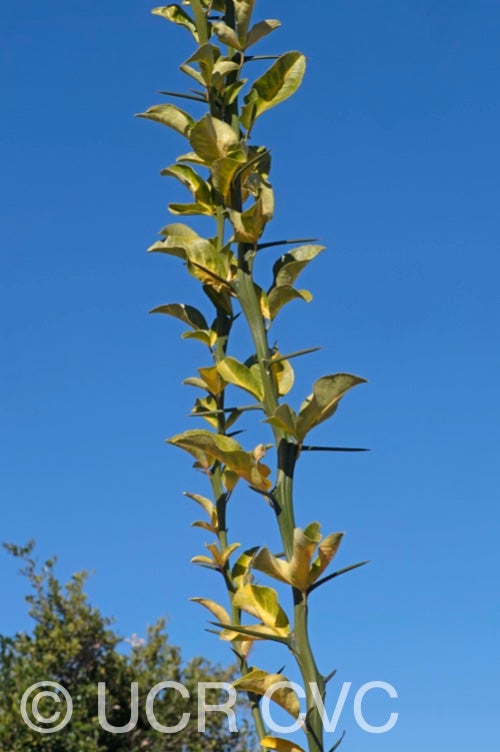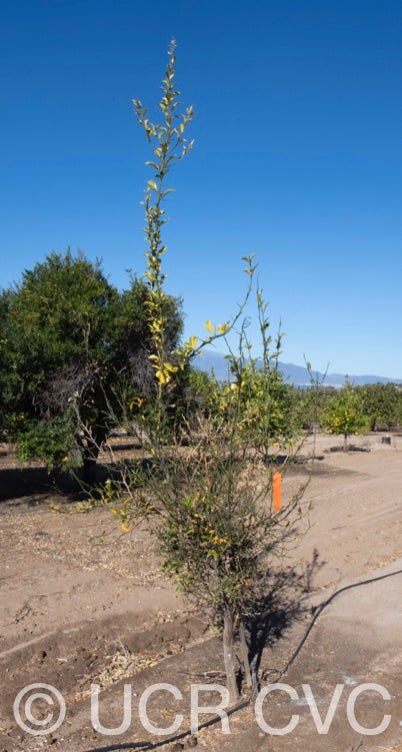Citrus duttae Tanaka
CRC 4245
Source
Received as budwood from Florida DPI clone DPI-814-B at F/E 19-21. This accession was sent from the USDCS to the USHRL when the USDCS was closed in 1983, or perhaps earlier.
Parentage/origins
Hybrid of C reticulata 'Changsha' X P trifoliata 'English large flowered', Joe Furr, 1965.
Rootstocks of accession
Carrizo citrange
Season of ripeness at Riverside
Unknown
Notes and observations
RRK, 9/2006: "Reintroduction of RRUT 202 (= RQ-2002-28) and RRUT 218 (= RQ-2003-14), both of which did not establish. Although the original cross was made in California, the release of this accession was only possible due to the developmental efforts of USHRL personnel, particularly Heinz Wutscher. The source of material given to DPI by USHRL (see Source History) were rooted cuttings from Heinz Wutscher and budwood from Kim Bowman. This information did not fit in the comment field. According to the Release Notice (dated 2001), "US-852 is well adapted for production of sweet oranges and other citrus crops in some parts of Central Florida...The major attributes of this new rootstock cultivar are its resistance to several important diseases and low production of root sprouts in the field, and its favorable effects on scion tree size, fruit quality, and productivity...The shorter starure of trees on US-852 in comparison to Swingle and many other common rootstocks allows a more rapid and economical harvest...US-852 rootstock was tested for resistance to Phtyophthora nicotianae by stem inoculation of potted greenhouse plants and found significantly more resistant to damage than several common rootstocks, including Sour orange and Carrizo citrange. Trees of 'Hamlin' on US-852 rootstock were observed to grow and yield well in the presence of severe Florida isolates of citrus tristeza virus...molecular marker analysis suggest[s] that US-852 carries the CTV resistance gene from Poncirus trifoliata. There is preliminary evidence that US-852 may be unacceptable for use where there is high salinity or pH. [Seed propagation of US-852] is inefficient...due to relative unfruitfulness, a low number of seed per fruit, and a high proportion of off-type seedlings. Only about half of seedlings recovered are of nucellar (apomictic) origin and have uniform morphology typical of US-852. Cuttings...root easily, but a sizable proportion of these never develop well-anchored plants for nursery handling. Tissue culture propagated plants of US-852 appear healthy, true-to-type, and develope strong root systems in the nursery."
RRK 5/31/2018: "Although this accession was sanitized and released from quarantine by NCGRCD, it was given to CCPP for VI processing."
Availability
Not commercially available in California.
USDA Germplasm Resources Information Network page for US-852 citrandarin


